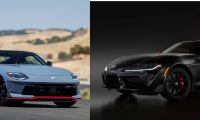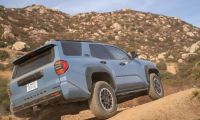Tesla's Insane Demand and the Collapse of Legacy Auto
Tesla vehicles continue to have an insane demand, according to an article from Forward Cap, despite the global economy being in a recession-like state. This is due to continued price increases, continued wait times for Tesla vehicles, and overall EV adoption.
Tesla Price Increases
Tesla has continued to raise prices, despite a recession, and yet, Tesla has raised prices of their vehicles. This is a strong signal of high demand for Tesla vehicles. Here are the prices increases from Q1, 2021 to Q2, 2022 for all Tesla vehicles:
Model 3 - Standard Range: $38,500 to $47,000
Model 3 - Long Range: $47,500 to $58,000
Model 3 - Performance: $57,000 to $63,000
Model Y - Long Range: $50,500 to $66,000
Model Y - Performance: $61,000 to $70,000
Model S - Long Range: $80,000 to $105,000
Model S - Plaid: $120,000 to $136,000
Model X - Long Range: $90,000 to $121,000
Model X - Plaid: $120,000 to $139,000
The most significant price increases come from the long range versions of the Model 3, Model S, and Model X. The plaid versions are next, and lastly, the standard range versions. Only the performance versions of the vehicles show the smallest price increases overall.
Tesla COULD NOT raise prices like this and still have high demand, if there was not a HUGE demand for their vehicles. Tesla continues to sell every vehicle they make.
What about price increases for other auto makers. Yes, they have raised prices, however, they do not have the same demand as Tesla. Other gas car makers are having their sales go down. Let's look at the decrease from the first half of 2021 to the first half of 2022:
GM: -18.0%
Toyota: -18.1%
Ford: -6.5%
Stellantis: -14.4%
Hyundai: -13.6%
Honda: -37.5%
Nissan: -30.2%
Tesla: +88.7%
Volkswagen: -31.8%
Subaru: -17.4%
Daimler: -12.2%
BMW: -10.6%
Mazda: -20.3%
Geely: -17.3%
Tata: -44.7%
A total of a -17.3% decrease overall, from 8,347,140 units to 6,901,760 units. This shows the collapse of legacy auto.
Tesla has a demand that far exceeds supply. They cannot and should not lower prices until this demand catches up.
Wait Times for Tesla Vehicles
Tesla has raised prices and production rates and the wait times for their vehicles are still at record highs. Tesla is at an all-time high for production and an all-time high for prices, yet the wait times for their vehicles are still at record high times.
A base or long range Model Y has a wait time into January and April of next year. Similar wait times can be found overseas. This shows just how sought after Tesla vehicles are. People will pay more to get things faster. People buying Tesla vehicles, knowing they will have to wait 6 to 9 months.
Tesla's vehicles have hit record highs in backlog units. Right now, Tesla has a backlog of 497,172 backlog units, according to Troy Teslike:
Based on wait times for new orders and the production rate, Tesla's order backlog is still the same in June as it was in March.
• Fremont Factory:
Backlog is equal to 4 months & 21 days of production
• Gigafactory Shanghai
Backlog is equal to 4 months & 11 days of production pic.twitter.com/SZcUAXT60B— Troy Teslike (@TroyTeslike) June 4, 2022
This is a combination of units from the U.S. and from overseas. It seems like if there was more supply and higher prices, the order backlog would shrink. But this is not the case for Tesla. As they sell more vehicles, word of mouth will spread. Then more people want a Tesla. They just continue to sell more and more as others talk about them.
EV Adoption
Inflation is at a 40-year high and one of the most biggest contributors to it is energy. This is the primary source for electric vehicles. Here are some things that show strong EV demand:
Uber drivers are leasing Tesla's for less than it costs for just gas alone for a gas car. Ride sharing, yellow cabs, and rental car companies are all adopting EVs. Just look at Hertz. This has a compounding effect on the demand for Tesla vehicles as hundreds of thousands of people experience a Tesla for the first time.
When people consider an EV for the first time, they are going to compare the vehicles against other companies. Tesla does not need to advertise because many consumers are going to inform themselves and compare products. Tesla's vehicles outshine others in price, performance, and functionality.
EV adoption is still only 5% of U.S. vehicle sales. Tesla orders jumped after the Super Bowl in February. Tesla was the only company that did not advertise, but because of other car companies advertising their electric vehicles, Tesla vehicles were found and compared against.
The biggest risk for Tesla is production and being able to keep up with consumers who want EVs. Ramping production has been a challenge, especially at their new factories, Giga Texas and Giga Berlin. New manufacturing methods and 4680 batteries are causing Tesla to have to figure out an entirely new process. Eventually they will, but it will take time, most likely by the end of 2023.
What do you think about the overall demand for EVs? Is Tesla's demand going to continue?
For more information, see this video by Steven Mark Ryan:
Leave your comments below, share the article with friends and tweet it out to your followers.
Jeremy Johnson is a Tesla investor and supporter. He first invested in Tesla in 2017 after years of following Elon Musk and admiring his work ethic and intelligence. Since then, he's become a Tesla bull, covering anything about Tesla he can find, while also dabbling in other electric vehicle companies. Jeremy covers Tesla developments at Torque News. You can follow him on Twitter or LinkedIn to stay in touch and follow his Tesla news coverage on Torque News.












